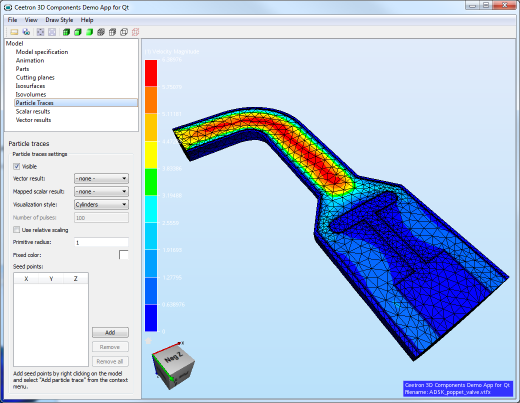Tutorials
The HOOPS Envision for Desktop documentation provides a large collection of examples, tutorials and code samples. These pages cover a range of topics, from basic viewers to step-by-step tutorials for specific features.
The examples and tutorials are provided with full source code and can be compiled and run on several platforms and UI toolkits.
Tutorials
The tutorials focuses on how to use the different visualization features provided in HOOPS Envision for Desktop. Select one of the tutorials in the list below to go directly to the documentation and the step-by-step instructions.
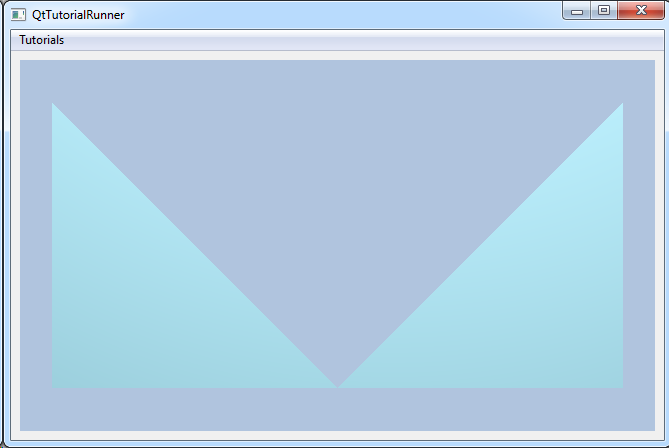 |
UnstructGrid: Simple Model with Two Triangles Shows how to create your own part and to use it in a model. The geometry is a very simple structure containing two triangles only. |
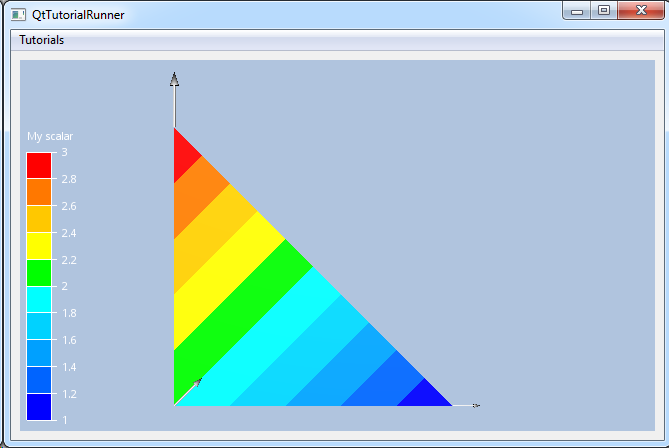 |
UnstructGrid: A Simple Model with Results Shows how to build an UnstructGridModel geometry, part and results. The geometry is a very simple structure containing a single triangle and a scalar result mapped as fringes, a vector result and a displacement result. |
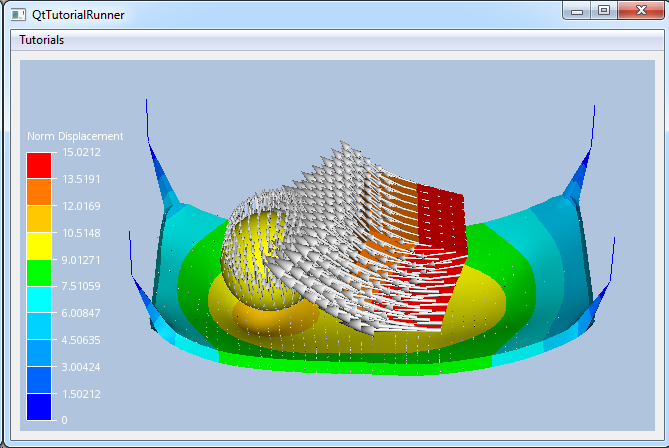 |
UnstructGrid: Load Model from File and Set Up Model Specification Shows how to create a data source by loading a VTFx file and how to setup a model specification |
 |
UnstructGrid: Create a Cutting Plane with a Scalar Result as Fringes Shows how to create a cutting plane and show a scalar result mapped as fringes to the surface. |
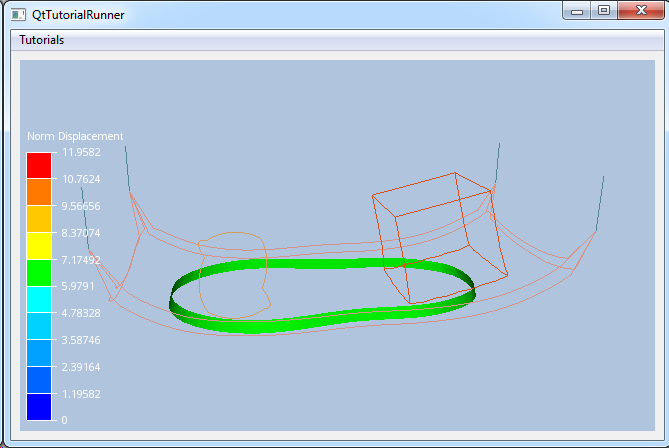 |
UnstructGrid: Create an Isosurface Shows how to create an isosurface based on a scalar result id and a scalar value. |
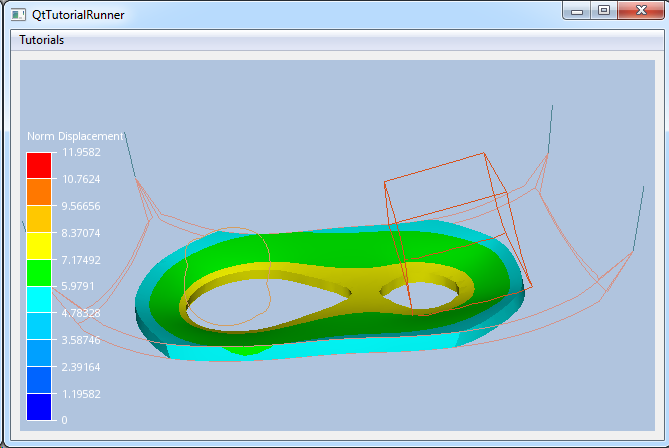 |
UnstructGrid: Create an Isovolume Shows how to create an isovolume based on a scalar result id and a maximum and minimum scalar value. In addition, the scalar result will be shown as fringes on the isosurface. |
 |
UnstructGrid: Apply Part Settings to a Model Shows how to apply some part settings to parts in the model. (Part 1: Set invisible, Part 2: Set color to blue, Part 3: Set draw style surface mesh, Part 4: Set opacity) |
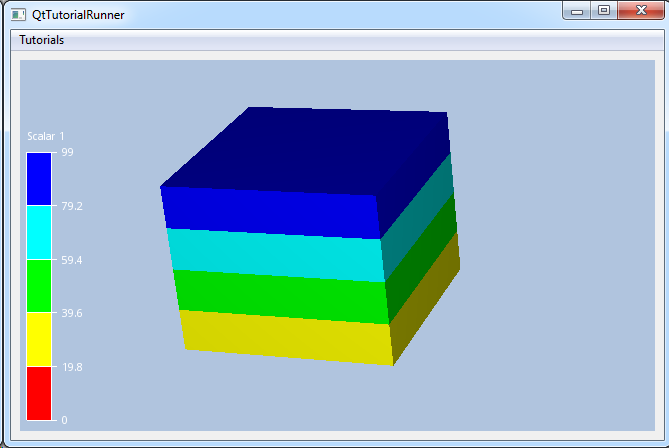 |
UnstructGrid: Set Scalar Settings on a Loaded Model Shows how to change scalar settings for visualized result. |
 |
UnstructGrid: Set Vector Settings on a Loaded Model Shows how to change vector settings for visualized result. |
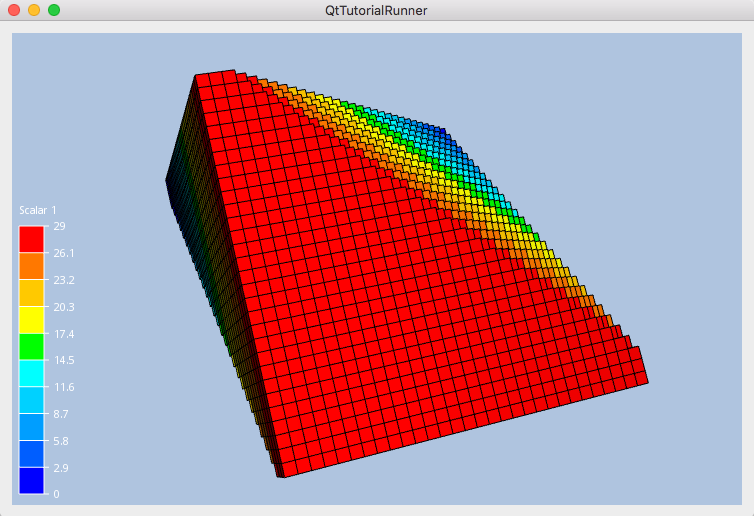 |
UnstructGrid: Using DataElementSets to Filter the Model Shows how to use DataElementSets to filter the model by specifying which elements that are visible. |
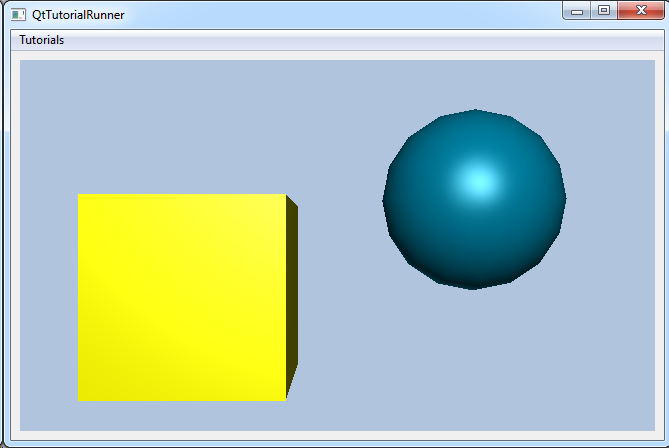 |
UnstructGrid: Create a Custom DataReader to Add Support for Your File Format Shows how to get your own analysis results into the UnstructGridModel by creating a DataReader. It is a very simple reader that returns one hexahedron element with one scalar, one vector, one displacement and one transformation result, but it will work as a starting point for building your own file reader. |
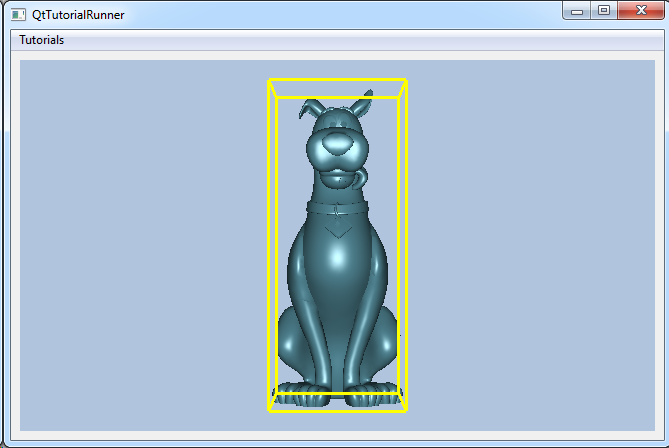 |
Visualization: Draw Bounding Box Using Markup Model Shows how to create a data source by loading a VTFx file and drawing the models bounding box as a markup model. |
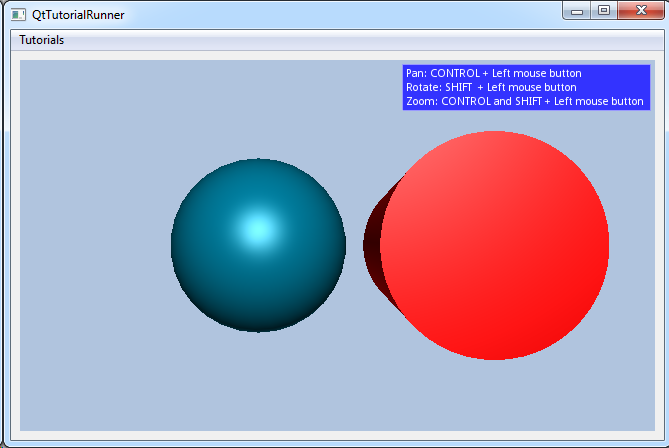 |
Visualization: Create a Custom Navigation Handler to Support a Custom Navigation Scheme Shows how to create a custom navigation scheme by subclassing the cee::vis::CameraInputHandler. |
 |
Geometry: Highlight Clicked Parts Shows how highlight parts as a response to a mouse press event. |
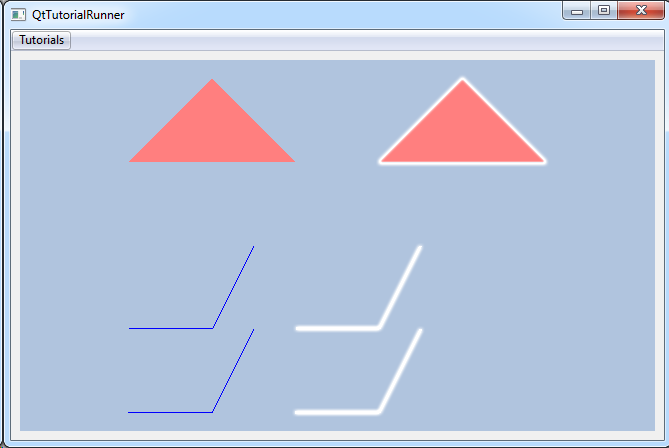 |
Geometry: Create a Geometry Model Shows how to create a geometry model with different parts and effects. |
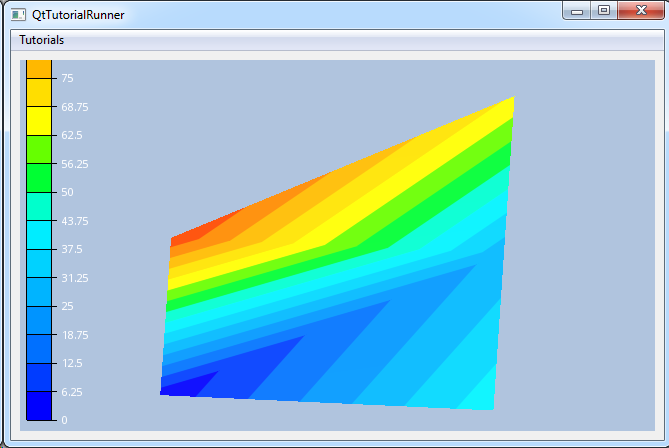 |
Geometry: Create a Geometry Model with Texture Shows how to create a geometry model using the texture effect to show a scalar result. |
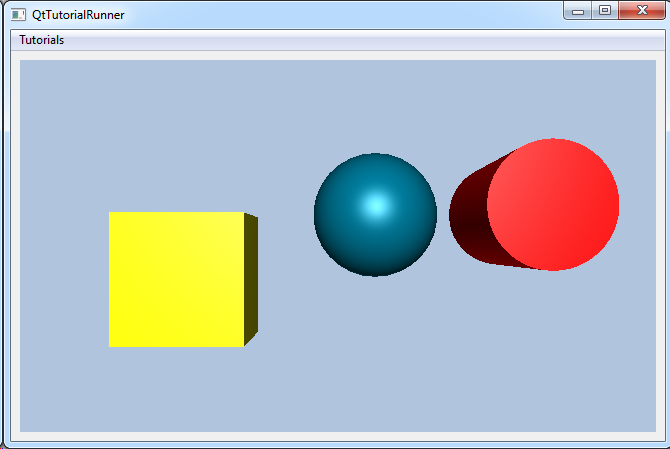 |
Geometry: Create a Geometry Model with Geometric Primitives Shows how to create a geometry with geometric primitives like spheres, boxes and cylinders. |
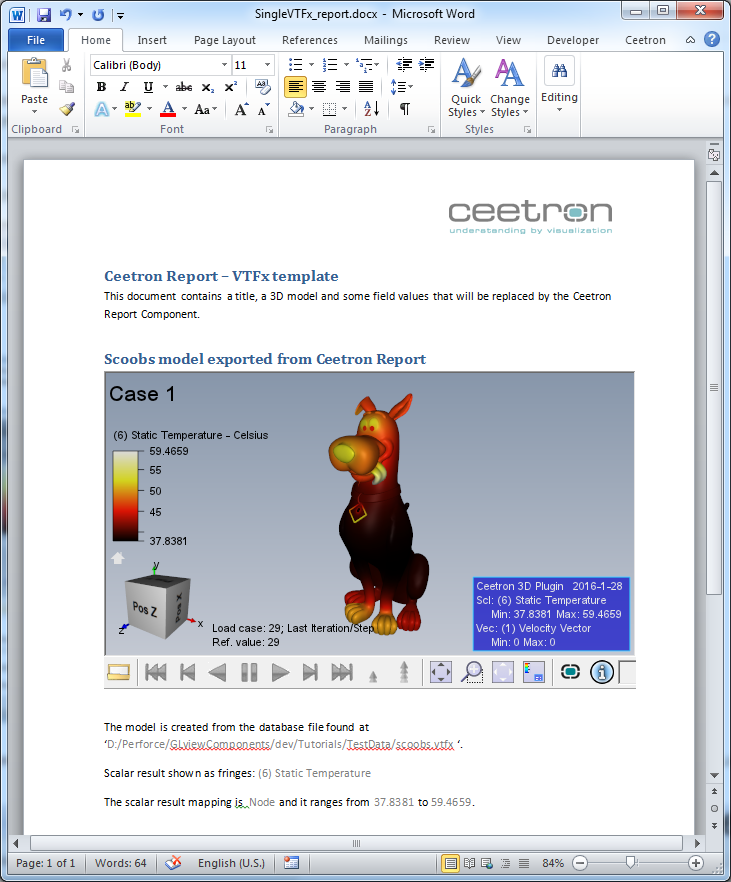 |
Report: Create a Simple Word Report with a 3D Model Shows how to generate a Word report containg a 3D model. |
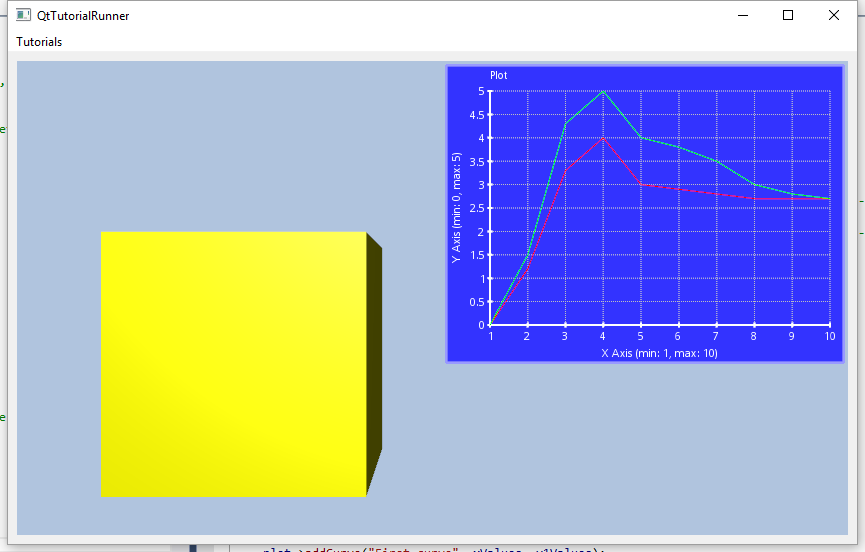 |
Plot2d: Create a Simple Overlay Plot Creates a basic 2D plot and shows it as an overlay item in the view. |
The code of the tutorials is also available without the step-by-step instructions on the Code Examples page to make it easier to copy the code into your projects.
TutorialRunner
The tutorials can also be tested directly in one of the TutorialRunner applications. These are called QtTutorialRunner, MfcTutorialRunner, and WxTutorialRunner and can be found in their respective folders under Tutorials in your installation.
Please note that the TutorialRunner framework is not meant to represent best-practice code, and only serves as a convenient way to demonstrate the code in the tutorials. Please compile them in-source to find necessary test data.
Demo Applications
We have created two demo applications; One for Qt and one for Windows Forms. These can serve as a starting point for your own application, as inspiration and a best-practice-coding-guide. They also give a more in-depth demonstration of the Core, Visualization, and UnstructGrid components.
